The African violet blooms almost all year round - a small plant with a big impact. However, it has nothing to do with real violets.
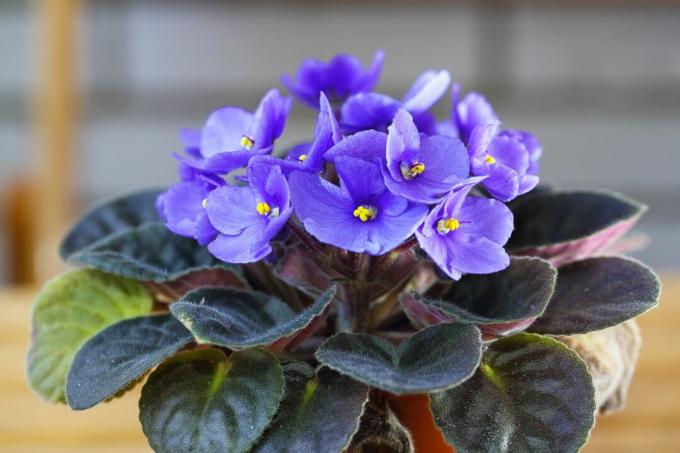
With its colorful flowers in a wide variety of color combinations, the African violet (Saintpaulia ionantha) a real eye-catcher. No wonder some people have developed a passion for collecting. Here you can find out how to care for this special plant in your own four walls.
contents
- African violets: origin and properties
- The most beautiful African violet varieties
- Location, soil and co. for the houseplant
-
African Violet Care
- Water African violets
- Fertilize
- Cut
- Repot African violets
- diseases and pests
- Propagating African violets
- Are African Violets Poisonous?
African violets: origin and properties
The wild forms of the African violet (Saintpaulia ionantha) come from the Usambara Mountains of Tanzania. The African violets, which we keep as houseplants, are always hybrids, i.e. crosses of different wild species. The houseplant African violets are usually created by hybridization of
Saintpaulia ionantha with one of many subspecies. These include, for example Saintpaulia ionantha subsp. grandifolia or Saintpaulia ionantha subsp. nitida. The plant species belongs to the Gesneria family (Gesneriaceae). In nature there is the African violet – which, by the way, is not related to the actual violets (viola) is related – only rarely found.The perennial, herbaceous plants form a leaf rosette of fleshy, downy leaves that remain on the evergreen plant all year round. African violets reach about 20 cm in height and width. In the right location, the African violet blooms all year round. The flowers shine in violet, white, pink or can be multicolored. The yellow stamens shine in the middle of the flower. There are varieties with smooth, wavy or fringed petal edges, as well as double and single flowers.
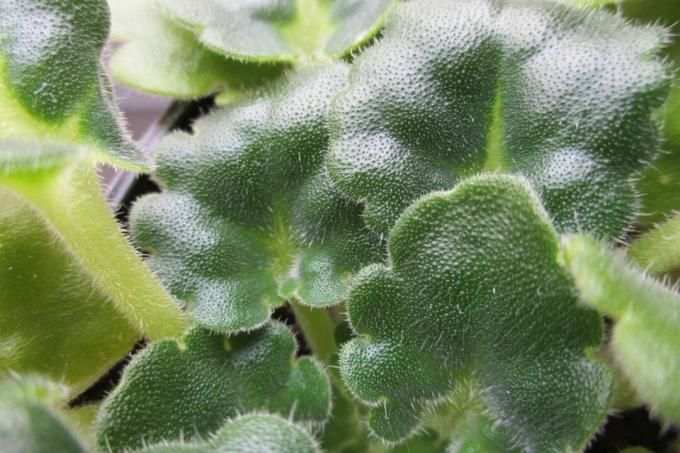
Tip: The name of the African violet comes from the color of the first cultivated form. This was violet blue and, together with the area of origin of the wild form, gave the African violet its name. In English-speaking countries, the African violet is called "African Violet".
The most beautiful African violet varieties
The African violet is available in many colors and also multicolored. From purple to white to pink or blue, there is something for everyone. Among the more than 2000 varieties, there are even those with colored leaves, but they are among the rare African violets. Here we present the most beautiful varieties of African violets Saintpaulia ionantha in front.
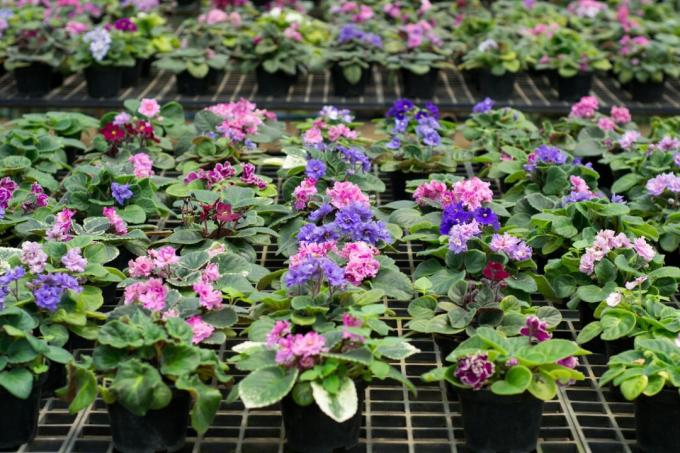
- ‘Arthur’: With this variety you get a blue African violet.
- ‘Bordeaux’: This strain produces pretty burgundy-red buds.
- ‘Comet’: If you prefer to have a white African violet, this variety is a good choice.
- 'Morgan's Sweet Patootie': The flowers of this variety are particularly small, have a bell shape and a delicate, salmon-colored hue.
- ‘Rob’s Chilly Willy’: An African violet with double flowers in light violet, which also belongs to the mini African violets.
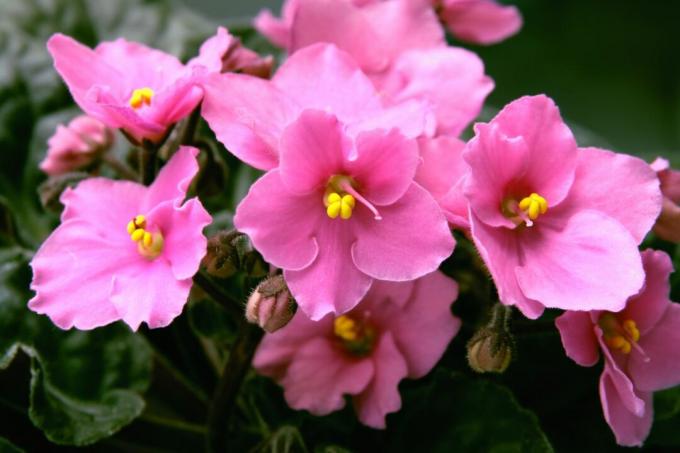
Location, soil and co. for the houseplant
The African violet feels particularly comfortable in a bright and warm place without direct sun or drafts. A south-west facing window is well suited due to the plant's high light requirements. To ensure that all areas receive even light, the African violet should be rotated regularly or a reflector used. In winter, the light supply can be improved with a plant lamp.
A temperature of 18 - 24°C should be guaranteed all year round, because the houseplant is not hardy. Temperatures as low as 16°C can affect growth and flowering.
Since high humidity is also beneficial, a bright kitchen or bathroom window is an ideal location for the African violet. In other rooms, the humidity should be additionally increased by water bowls. Alternatively, you can fill expanded clay into the plant's saucer, place the pot on it and add water. In this way, the water evaporates directly in the vicinity of the African violet - without waterlogging occurring. Avoid spraying the leaves directly.

Tip: In summer, the African violet can also be outside - then the plant needs a shady spot. If it gets colder than 16 °C, it has to be put back inside.
If you plant the African violet, choose a shallow pot, because the plant does not have deep roots. However, the vessel should definitely have a drainage hole and it is also advisable to create a drainage layer made of coarse material. High-quality potting soil, such as ours, is suitable as a substrate Plantura organic potting soil. It keeps its stable structure for a long time, so the roots do not suffer from a lack of oxygen. Our peat-free soil can store water well and give it to the plants. It is best to mix in about 30% sand to improve the permeability of the substrate.
African Violet Care
Watering and fertilizing are among the main components of African violet care. But evenly high humidity is important to keep the plant healthy.
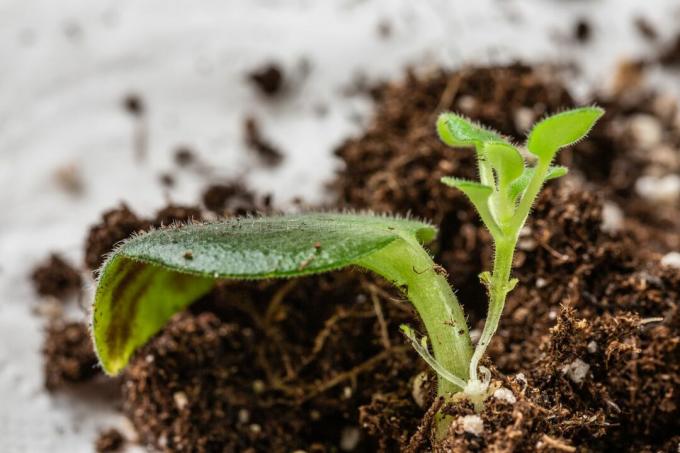
Water African violets
You should always water the African violet when the soil has dried on the surface. You can easily find out if this is the case with a finger test. It is best to use rainwater for watering or decalcify hard tap water before use. The water is then poured into the bottom of the coaster. Wait 15-20 minutes for the plant to get the water it needs. The rest has to be poured off again - the root system of the African violet does not tolerate waterlogging. Watering from below is recommended for African violets, as the leaves are very sensitive to moisture and are quickly attacked by harmful fungi.
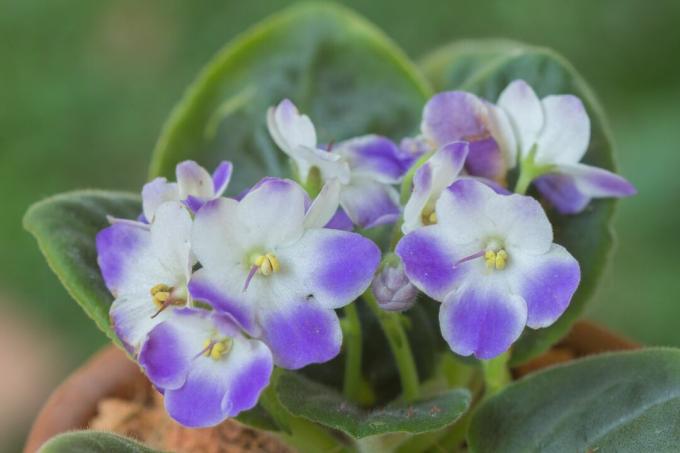
Fertilize
Regular additions of nutrients ensure that the plant grows vigorously and healthily and forms plenty of flowers. The African violet is one of the frugal plants when it comes to nutrient requirements. It occasionally needs fertilizer, but does not tolerate excessive nutrient concentrations. It is therefore best to use a liquid fertilizer for indoor plants, such as ours Plantura organic indoor & green plant fertilizer. Our primarily organic fertilizer provides the African violet with important nutrients and contains microorganisms that promote root growth. It can be easily dosed and introduced via the irrigation water, making it quickly available for the plants. In the growth phase in spring and summer, half the dosage should be applied every two to three weeks. In winter, a nutrient application every six to eight weeks is sufficient.
Cut
A pruning is not necessary for the small plants. Instead of cutting the African violet, only withered leaves and flowers are carefully twisted out.
Tip: Dusty leaves are carefully cleaned with a brush, because a cloth cannot do much on the fine hair.
African violetsmpot
You rarely have to repot the African violet, as it requires little space for the roots and even likes to feel a little tight in the root area. However, if the pot is completely rooted, you should choose a slightly larger planter and repot the African violet, preferably in spring.

diseases and pests
The African violet does not bloom, lets the leaves droop or shows small pests? Such diseases and pests have different causes, but can usually be successfully combated:
- mosaic disease: If the leaves of the African violet are changing color in a mosaic manner and have light spots, there is a chance that the plant is suffering from a viral disease. Avoid injuring the African violet as this is where the virus enters the plant. If the plant is already sick, it must be disposed of immediately.
- Aphids: Frequent, unwelcome visitors to houseplants are aphids, which particularly often attack weakened plants. Since the sensitive leaves of the African violet should not be washed off, you can only collect the pests by hand. Alternatively you can Beneficial insects against aphids insert. An effective means, for example, are ours Plantura lacewings against aphids, thrips & co, which are simply applied to the plant.
- Mealybug: The sap-sucking ones Mealybug usually hide under the leaves or in the leaf axils and leave greasy residues. In addition to collecting the animals, biological means such as ours can also be used Plantura Pest Free Neem used to control mealybugs, but also thrips. It can be easily dosed and used on ornamental plants against many insect pests.
- thrips: The small pests are most likely to be recognized by the damage, namely the pinprick-like brightening on the leaves. Also against thrips there are beneficial insects and biological agents.
- Hanging Leaves: If the African violet lets its leaves droop, it has either received too much or too little water. You can easily check that on Earth. Is it damp and smelling musty, or is it rather sunken and dry? Provide the plant with fresh substrate and adjust the watering amount. Another cause can be heart rot, i.e. rot at the growing point. It is caused by fungi in the soil combined with too much moisture. To combat affected parts of the plant must be generously removed.
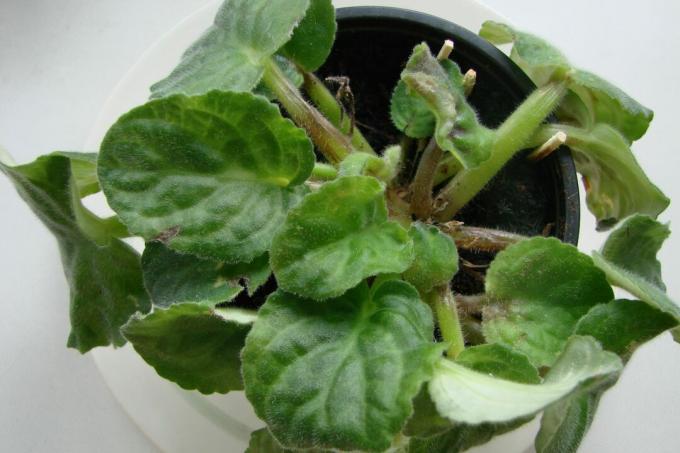
- Brown or yellow leaves: Low humidity, drafts, waterlogging or drought are causes of leaf discoloration. Waterlogging and dry air are common care mistakes for indoor plants.
- No flowers: The fact that the floriferous African violet does not form any flowers is usually due to incorrect site conditions or incorrect care. In particular, too little light or an environment that is too cold can be a problem.

Propagating African violets
The African violet can be propagated vegetatively, i.e. asexually – cloned, so to speak. Alternatively, it is propagated by seeds, i.e. generatively, whereby it is possible to create your own crosses.
Leaf cuttings are often used for vegetative propagation of African violets. The method is simple and mostly successful. For this purpose, one or more leaves including the petiole are plucked off the mother plant, preferably in spring. Now a shallow pot is filled with sphagnum moss or potting soil. For the successful growth of cuttings, a nutrient-poor substrate, such as ours Plantura Organic Herb & Seed Soil, be used. In addition to the low nutrient content, the loose structure of our soil also supports root development. The leaf itself should not touch the ground, only the petiole is inserted into it, otherwise mold will quickly settle. A temperature above 20°C is just as important as high humidity for the cuttings to grow. For example, you can place a bowl of water next to the cuttings. After four to six weeks, new leaflets appear above the ground. This shows that the propagation was successful and the newly appeared plants can be repotted individually and placed in partial shade.

African violets can also be propagated by dividing plants. To do this, carefully separate the rosettes into two parts in spring and plant them in separate pots. The plants are then placed warm and partially shaded. After about three weeks they can move to a brighter place and be cared for normally.
The sowing is a bit more complex, but can be worthwhile because combinations of different varieties are possible. To do this, the African violets must first be pollinated by hand so that seed heads form. The seeds are stored dry in a cool room in a dark container over the winter. The seeds are then sown in spring on moist moss lying on seed soil. The ambient temperature should be around 21 °C. Cover the whole thing with cling film and air it twice a day to avoid mold growth. After about three weeks you can see the first seedlings, which develop quite slowly. As soon as two to three pairs of leaves can be seen, you can repot the seedlings into nutrient-poor substrate and continue cultivating at 16 - 18 °C. After that, they are gradually acclimated to the normal conditions of adult African violets.
Are African Violets Poisonous?
As an ornamental plant, the African violet is not suitable for consumption. There is some evidence that it is incompatible or mildly toxic. Adults don't have to worry, though, as it's rated as safe for them. However, there is no benefit to them, children or pets in eating African violets.
If you like colorful flowers in the room, you should take a look at the blood flower throw. The plant with the bright red, spherically shaped flowers is still relatively unknown to us as a houseplant.
